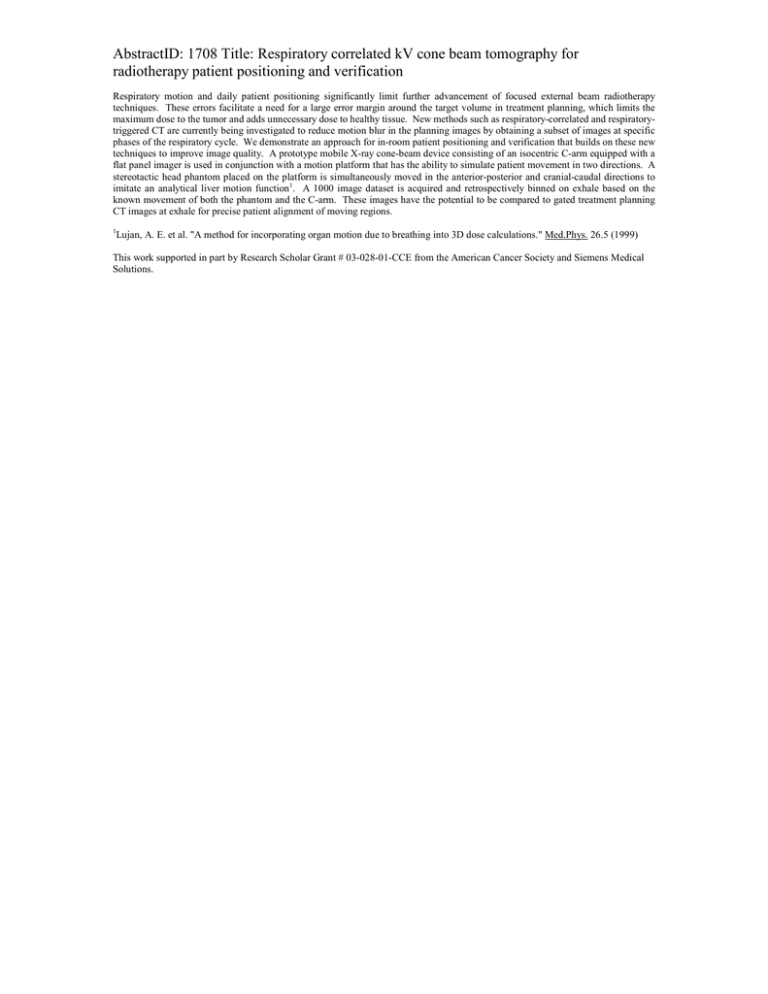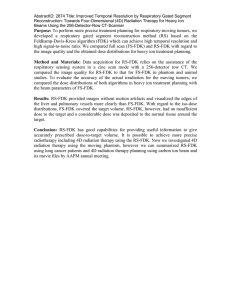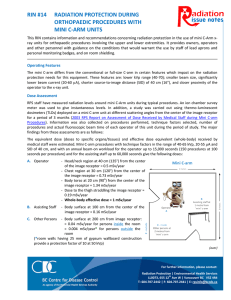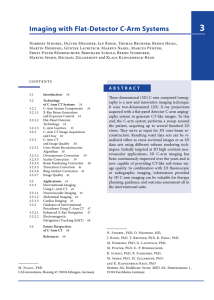AbstractID: 1708 Title: Respiratory correlated kV cone beam tomography for
advertisement

AbstractID: 1708 Title: Respiratory correlated kV cone beam tomography for radiotherapy patient positioning and verification Respiratory motion and daily patient positioning significantly limit further advancement of focused external beam radiotherapy techniques. These errors facilitate a need for a large error margin around the target volume in treatment planning, which limits the maximum dose to the tumor and adds unnecessary dose to healthy tissue. New methods such as respiratory-correlated and respiratorytriggered CT are currently being investigated to reduce motion blur in the planning images by obtaining a subset of images at specific phases of the respiratory cycle. We demonstrate an approach for in-room patient positioning and verification that builds on these new techniques to improve image quality. A prototype mobile X-ray cone-beam device consisting of an isocentric C-arm equipped with a flat panel imager is used in conjunction with a motion platform that has the ability to simulate patient movement in two directions. A stereotactic head phantom placed on the platform is simultaneously moved in the anterior-posterior and cranial-caudal directions to imitate an analytical liver motion function1. A 1000 image dataset is acquired and retrospectively binned on exhale based on the known movement of both the phantom and the C-arm. These images have the potential to be compared to gated treatment planning CT images at exhale for precise patient alignment of moving regions. 1 Lujan, A. E. et al. "A method for incorporating organ motion due to breathing into 3D dose calculations." Med.Phys. 26.5 (1999) This work supported in part by Research Scholar Grant # 03-028-01-CCE from the American Cancer Society and Siemens Medical Solutions.









